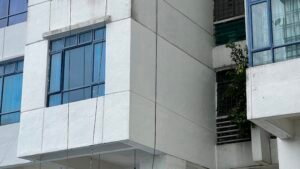Waterproofing your walls is crucial to prevent water damage, mold growth, and structural issues that can arise from moisture infiltration. Whether you’re dealing with a leaky basement, damp interior walls, or external walls exposed to the elements, properly waterproofing the existing surfaces can save you from costly repairs down the line. This guide will walk you through the essential steps to effectively waterproof your walls.
Step 1: Assess the Condition of the Surface
Before starting the waterproofing process, it’s important to thoroughly inspect the walls for any signs of damage or weakness. Look for:
- Cracks and Gaps: Any cracks, gaps, or holes in the walls must be repaired before applying waterproofing materials.
- Mold and Mildew: If you notice mold or mildew, it indicates existing moisture problems that need to be addressed.
- Loose Paint or Plaster: Ensure the surface is clean and free of loose paint, plaster, or debris, as these can interfere with the adhesion of waterproofing products.
Step 2: Prepare the Surface
Proper preparation of the wall surface is crucial for effective waterproofing. Here’s how to prepare the surface:
- Clean the Wall: Remove dirt, dust, grease, and any other contaminants using a mild detergent and water. For exterior walls, a pressure washer can be used for thorough cleaning.
- Repair Cracks and Holes: Use a quality masonry repair compound to fill in any cracks or holes. Smooth out the surface and allow it to cure completely.
- Prime the Surface (Optional): Depending on the waterproofing product you’re using, applying a primer can enhance adhesion and ensure an even application.
Step 3: Choose the Right Waterproofing Material
Selecting the appropriate waterproofing material is key to achieving long-lasting protection. Common options include:
- Liquid Waterproofing Membranes: These are easy to apply and can be used on both interior and exterior walls. They form a seamless barrier against water.
- Cementitious Waterproofing: Ideal for concrete and masonry surfaces, this type of waterproofing involves mixing a cement-based compound with water or an acrylic additive to create a thick, brushable mixture.
- Bituminous Coating: Often used for exterior walls and foundations, bituminous coatings offer excellent water resistance and flexibility.
- Silicone-Based Sealers: These are best for sealing hairline cracks and providing a water-repellent finish on exterior walls.
Step 4: Apply the Waterproofing Material
Once the surface is prepared and you’ve selected your waterproofing product, it’s time to apply it. Follow these general steps:
- Start with the First Coat: Using a brush, roller, or sprayer, apply the first coat of waterproofing material evenly across the wall. Be sure to cover all areas, including corners and joints.
- Allow to Dry: Let the first coat dry according to the manufacturer’s instructions. This may take several hours to a full day, depending on the product and environmental conditions.
- Apply Additional Coats: For maximum protection, apply at least one or two additional coats of waterproofing material. Each coat should be applied perpendicular to the previous one for better coverage and durability.
Step 5: Seal Joints and Corners
Joints, corners, and edges are common weak points where water can infiltrate. To ensure these areas are properly sealed:
- Use a Sealant: Apply a high-quality silicone or polyurethane sealant along all joints, corners, and edges where the walls meet the floor or ceiling.
- Reinforce with Waterproofing Tape: In high-risk areas, consider applying a waterproofing tape over the sealant before the final coat of waterproofing material.
Step 6: Inspect and Maintain
After the waterproofing process is complete, inspect the walls for any missed spots or inconsistencies. Regular maintenance is also important to ensure the waterproofing remains effective:
- Check for Signs of Wear: Periodically inspect the walls for any signs of cracks, peeling, or moisture penetration.
- Reapply as Needed: Depending on the type of waterproofing product used, you may need to reapply the waterproofing every few years to maintain its effectiveness.
Waterproofing existing wall surfaces is an essential step in protecting your property from the damaging effects of moisture. By following these steps—assessing the surface, preparing it properly, choosing the right waterproofing material, applying it carefully, and maintaining the treatment—you can ensure that your walls remain dry, strong, and free from damage for years to come.
If you’re not sure where to start or need professional help, don’t hesitate to contact an expert. Proper waterproofing is an investment in the longevity and safety of your home or building.


